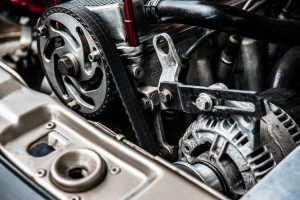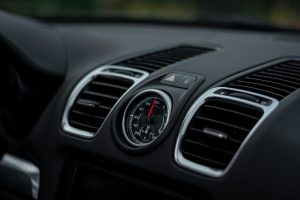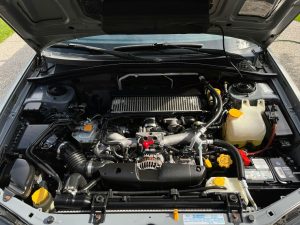In one way CB radios probably feel a bit ol-school to most people. In real terms when compared against some of the latest technology, they are. But that really means that they don’t rely on a lot of modern, high-end technology in order to work properly. Your smartphone is only of value as a communication device as long as you have a mobile phone tower within range. But CB radios are inexpensive and they work just about anywhere. They offer certain securities that you just can’t get with other modern day technology and equipment.
When you hit 4WD tracks in Australia, you may not have any phone signal at all, which makes contact with other people and vehicles impossible. This makes the UHF radio a sound choice when travelling around Australia. In some ways it’s a low-tech essential for long-distance touring to help you stay in contact with other vehicles and help if you need it.
For short range communication between other vehicles, a UHF radio for travelling in Australia is an essential tool to have with you. It’s a primary system many outback drivers, farmers, station workers, truck drivers, mining staff and emergency workers all use. You don’t need a licence or prior experience to use a UHF CB Radio and the cost is relatively low. The main two UHF channels that you will need to have tuned in are Channel 18 (for caravanners and campers) and Channel 40, which is used by Truck Drivers and for highway driving.
Always in Touch
If you’re a frequent road tripper, live in a remote area, or travel through remote areas, you probably know how inconsistent our mobile phone coverage can be. Even in the middle of heavy populated areas you can still have inconsistent coverage, so you can just imagine how bad it is when you get out into the great beyond. And of course, when you’re in a rural or remote place, on a road where nobody else is going to drive by for a long time, that’s when you need to be able to call for help. No phone connection means no means to call for help.
CB radios work everywhere. Channel 9 is designated for emergencies, so you can quickly hop on the radio and ask for assistance. Channel 9 is monitored full time throughout the country by local first responders, emergency services, or volunteers.
You can also get the basic information that you need from a CB radio. National Weather Radio has frequencies that have continuous weather and emergency alerts in every state. Any risks along your route will be broadcast on the local CB National Weather Radio frequency.
Communicate with Other Drivers
One of the most common uses for a UHF radio while travelling in Australia is having the ability to easily communicate with other drivers who are sharing the road with you.
People can let you know when they’re about to overtake so that you can adjust your speed accordingly. Similarly, you can let other drivers know that you’re going to overtake, so they are aware and don’t freak out or get annoyed with you.
Being able to let someone know that there is something amiss with their set-up or vice versa can be a very important safety issue. Maybe your back tyre looks a bit flat, or the bikes are coming loose on the back of the caravan. You might notice that someone else has left the step out on their camper or the door has swung open.
Off-Roading
For people who enjoy traveling off-road, a CB radio is indispensable. You can connect with other members of your group and keep everyone informed of location and route information. It’s like a walkie-talkie that always stays in range.
Cheap Technology
And because CB radios are so inexpensive to purchase and install, it really makes sense to have a CB radio of your own. You’ll need the antenna and the radio, and your expenses are done. From then on, you’ll always be connected to the rest of the world. Meanwhile, cell phones cost you money every single month.
CB radios offer great benefits, basic services and information, and don’t cost much money. They really do keep you safer, no matter what.
What is UHF CB Radio?
UHF CB is an ideal close range communications tool with no ongoing fee. The UHF is ultimately a two-way radio system across the spectrum of 476.4250–477.4125MHz. In 2021, the UHF CB frequency range is divided into 80 channels, which are outlined for their various applications in the graphic below.
What are the benefits of UHF CB communication?
Great for close range communication off-road, camping or fishing – the perfect way to stay in touch.
Which UHF CB Radio is right for me?
When selecting an in-vehicle or hand-held unit, buy the best power and quality you can afford, after-all this is an essential communication tool. Oricom products offer true quality at realistic prices, every time.
Why hand-held
Hand-held units offer a ‘portable’ UHF CB communication solution. As well as being a great addition to your in-vehicle radio communication set-up. They give you flexibility to take it with you once you’ve made your camp and also allow for better navigator communication when negotiating tricky off-road terrain as well as when parking or backing up in tight spots, especially with a caravan or trailer attached.
What about antennas
Generally, you would be looking for an antenna with 3dbi gain through to 6-6.5dBi gain, depending on the environment and your intended use. The 3dBi antenna has a wide pattern, ideal for undulating terrain. 6-6.5dBi antennas are popular due to their performance over distance on flatter or slightly uneven terrain. Higher gain, 9dBi antennas have a flatter and longer radiation pattern, more suited to distance on level terrain. We can offer you the best advice for that.
Etiquette when using a UHF CB Radio.
- Be aware of the Emergency channels which are strictly to be used for Emergency communications only. Emergency services monitor these channels and respond to requests for help.
- When communicating on a main channel, once contact is made, it is accepted that both ends of the communication shift their discussion over to another channel in order to free the main channel up.
- Be aware that all speech across the UHF CB frequency range is public. Anyone who is within range is free to join in with the conversation.
- Get an understanding of the channels we use in Australia which will help guide your communications and how you use the UHF CB frequency for on or offroad communications.
Additional Uses for a UHF
There are a range of additional uses for a UHF radio. When you’re travelling with other vehicles, chatting over the UHF is the easiest way to stay in communication with each other. Just avoid the popular stations, as you don’t want to clog up the channel with general banter.
Handheld UHF’s are great for your children to take with them when they’re off exploring or wandering around your camping area. It’s a simple way for them to stay in contact with you and alert you if there’s an emergency. You can have your radio switched on in the car beside your campsite (with doors or windows open), while the children have the handheld one.
If you are preparing a road trip in Australia, consider a mounted UHF radio installed in your vehicle, or at least grab a handheld UHF. Practice using it on the designated channels (without annoying anyone), so that you know what to do when a situation arises. It could just save your life or get you out of a predicament one day.
Autospark stocks a range from one the most popular and best brands to choose from, GME and they fit them too of course. If you need advice, you can always rely on the professionals at Autospark for the best in CB Radio communication.





